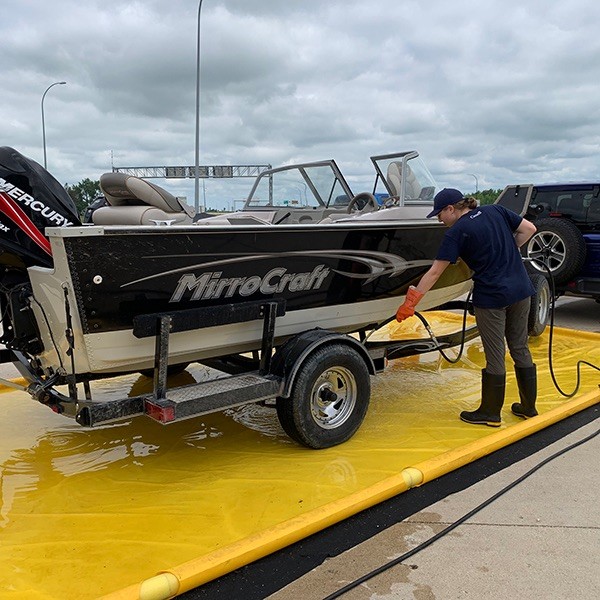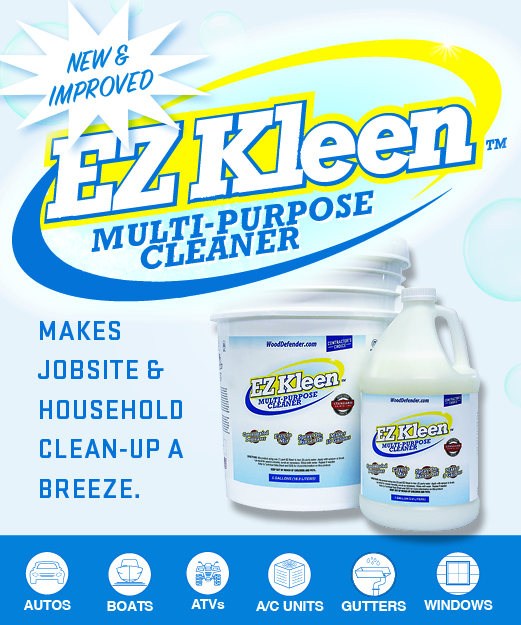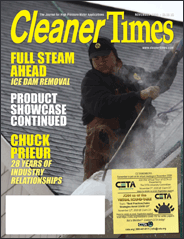
Hard to Contain: Wastewater
by Diane Calabrese | Published August 2025

Wastewater is the topic. But where to begin?
“It is a very large subject to wrap your hands around,” says Bill Sommers, who is associated with Pressure Systems Inc. in Phoenix, AZ and well known for his deep experience in the sphere of misting systems.
Indeed, the notion of wrapping hands around water in liquid form conveys the difficulty of keeping water contaminant free. In liquid form water flows and easily takes its own gravity-defined course if it meets no barriers.
Being an agile (universal) solvent, water takes many compounds (e.g. salts) into solution. Of course, some compounds, such as oil, do not mix with water.
We know the complexity: Once potable water is released from a spigot or hose, it is used. How used is a matter of degree, but it cannot just be captured and reused as though it were suitable for drinking.
So, it becomes a truism that the less water used, the less wastewater there is. Less wastewater simplifies life for all users – home, commercial, industrial, because water with even a hint of contaminants must be rehabilitated before it can be reused.
Moreover, minimizing organic waste in water takes some of the stress off the nitrogen and other cycles involving the nutrients that move through water, air and soil.
Sommers explains that it’s natural for manufacturers and end users of equipment to look at wastewater from the first point of contact. Different vantages result in slightly different views of what’s most important.
Pretreatment, says Sommers, should be in view. “In the design and maintenance of wastewater treatment systems, pretreatment often receives less attention than other stages.”
Making pretreatment a priority brings benefits. “[Its] primary goal of addressing specific contaminants early on is crucial for enhancing the efficiency and extending the lifespan of the entire system,” says Sommers.
“Also, effective pretreatment significantly improves filtration [and] reduces the frequency of [system] maintenance,” explains Sommers. He adds that pretreatment can be configured to handle a wide range of contaminants and adapted to site conditions.
“Pretreatment focuses on lessening the workload of the subsequent equipment [in a treatment system] by removing solids, free-floating oils, and dissolved organic materials,” says Sommers. The concept is simple: match the pretreatment steps to the “unique characteristics of the water” – i.e. the specific contaminants.
“[Steps] may include pH adjustment to facilitate the settling of solids and free-floating oils, which also enhances chemical filtration,” explains Sommers. “Additionally, the introduction of aeration and microbes can be employed to aid in the digestion of organic material, hydrocarbons, and emulsified oils.”
And the actual structure of the pretreatment system? ‘[It] can vary depending upon the construction, which will utilize wash pad designs, trenches, and above ground storage tanks,” says Sommers. “This all depends on the scale of operation and the nature of the contaminants.”
Containment
Ever spill a glass of water on the kitchen floor? Did the water start flowing across a ‘level’ floor? Very likely, especially in an older house.
Water will move, or flow. And that flow is a force to be reckoned with (see, for example, the utility of gpm from a pression washer).
Consequently, containment becomes a significant factor when dealing expeditiously with wastewater. Douglas, R. Latimer, the president of Latimat 2.0 in Innisfil, ON, Canada, has been perfecting versatile containment systems for many years.
Latimer explains that the goal of “nothing but rain down the drain” is the philosophy that has guided him in containment system development. “Since 1972 the Clean Water Act (CWA) — now revised many times, restricts effluents [from] entering storm drains, [and other] land drainage devices that flow to water bodies both in the USA and Canada.”
Stopping the flow is where Latimer’s system enters the picture. “The Latimat Containment System solves both safety and environmental problems,” he explains.
Latimer’s system can contain the effluent flowing from a cleaning target of virtually any size. The target could be a small car, or it could be an aircraft. His system has even been used by NASA.
The safety provided by the deployment of Latimer’s systems derives from the way it restricts potentially dangerous flow. The systems are used in the containment of fuel, chemicals, etcetera, in wash water.
The barrier-based nature of Latimer’s system means any mishap involving contaminated water can be contained and later, contaminants removed safely. It need not be a spill per se, of course. It could be wastewater generated by older methods of washing vehicles.
“Without the proper facilities to contain and treat waste waters, fleet operators commonly wash vehicles outdoors on pavement or on the ground,” says Latimer, giving us one example. “In these cases, waste waters and contaminants enter soils and ground water or are directly discharged to the storm sewer.” Ultimately, they move to a creek or other body of water.
“More scrutiny” from regulators has been the norm in recent years, explains Latimer. The regulators aim to ensure the CWA and other environmental laws are enforced.
The water user should strive to “prevent adverse impacts on our environment” by using containment so that the water can be disposed of properly or recycled for reuse,” says Latimer. “The water savings by using filtered water is immense.”
Many jurisdictions forbid discharge of wastewater into storm sewers or a catch basin land drainage device. That makes containment a must. After containment, the water can be shunted to a recycling device or a holding tank.
Power washing contractors who can recycle water with a device made part of their mobile cleaning vehicles can achieve “virtually zero discharge” to the waters the CWA aims to protect, explains Latimer. Contractors who use a recycling unit at a fixed site and discharge to a sanitary sewer can do the same.
There are many wastewater containment methods, says Latimer. For example, there’s a portable wash pad (easily stored with an electric storage reel mounted on a wash truck or building wall). The many other configurations include drain blockers, magnetic rail mats, and dike systems. Latimer’s company offers them all.
Customization
“Mi-T-M has been in the wastewater treatment industry for over 25 years,” says Aaron Auger, water treatment/dealer division manager at the corporation based in Peosta, IA. “Part of our process in assisting customers is figuring out the best way to deal with their issues.”
Collaboration with end users is ongoing. “We work in conjunction with our dealer network to provide a solution that fits the customer’s needs – as well as having a qualified service provider to ensure the system works for a lengthy time.”
How long a time? “In fact, the first biological treatment system we sold in 1998 to a golf course in Florida was just replaced in 2023 – after 25 years of use and millions of gallons or water being recycled,” says Auger.
Use less. Contain more. Recycle. The companies in our industry are all working on methods and devices that reduce water use. Helping to reduce water use is integral to best practices.
“All our closed loop systems [reduce use],” says Auger. “The intention is not only to reduce the amount of water being used, but to also reduce the amount of water being discharged. This helps to increase the ROI [return on investment] on the purchase of a reclaim system by saving both water consumption as well as costs associated with discharge.”
Yes, cost associated with discharge. Depending on the jurisdiction, full disposal of wastewater often requires a fee to be paid either to use a sanitary sewer or empty into a holding tank.
The fees associated with handling wastewater are part of the customization process at Auger’s company. “We do offer systems for discharge that will meet local parameters, but the majority of what we do is [geared] to re-use the water,” he explains.
Given the importance of clean water, can efforts to handle wastewater in a prudent way ever be given sufficient attention? That’s a rhetorical question. Ensuring the surface waters of the world provide a reliable supply of potable water to all who need it (and we are not there yet) is just one dimension of an issue that requires we think about volume, PFAs (polyfluoroalkyl substances), organic waste and so much more. In other words, all the waste that might be in water and how much of it there is.
Jesse Pullen, a water treatment engineer and the company colleague of Auger, is optimistic about all the efforts in progress. “Reusability” is key, he says.
“Reusability – what can the wastewater be safely and effectively reused for with proper treatment, as opposed to sending off to sewer and septic system?” says Pullen, serves as a guiding framework. The framework brings results.
“In addition to being able to reuse water in wash bay applications, over the years we have been able to recycle water for dust control, fluid testing, and even wetting down a racetrack for driver training in hazardous conditions,” says Pullen. “Every drop of water saved and reused is a help to the customer, not only financially, but also to the environment as well.”





